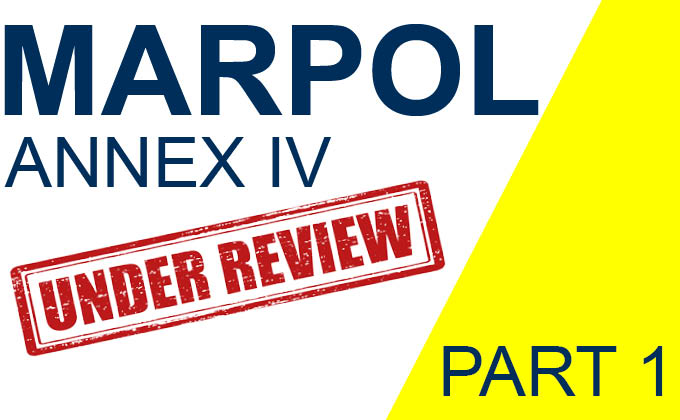MARPOL Annex IV is currently under revision by the IMO. We cover the most relevant topics in a multi-part article series:
PART 3: SEWAGE MANAGEMENT PLAN
Controlling ships’ sewage pollution is one of the first environmental initiatives stipulated under the MARPOL Convention. 50 years after its creation MARPOL Annex IV and its guidelines are undergoing a major overhaul, including
- the introduction of the Sewage Management Plan (SMP) and Sewage Record Book (SRB),
- the introduction of commissioning tests for sewage treatment plants during initial surveys,
- the introduction of performance tests for sewage treatment plants during renewal surveys,
- the removal of comminuting and disinfecting systems (CDS) as an alternative to proper sewage treatment plants,
- the requirement to integrate an effluent monitoring unit,
- the revisions of type-test guidelines for sewage treatment plants,
- the revisions of discharge standards during type tests for and operations of sewage treatment plants,
- the introduction of a definition of sewage sludge and its management practices,
- the review of the moderate discharge rate,
- the reception of sewage by the port facilities,
- and so on …
Whilst most of the proposals are targeted towards future new ships, the Sewage Management Plan (SMP) and the Sewage Record Book (SRB) could be made applicable for all ships, including existing ones, under the revised MARPOL Annex IV.
Considering the breadth and depth of the revisions, the work is a mammoth task. But how did it start and why is it necessary?
WHY MARPOL ANNEX IV NEEDS TO BE REVISED
There is no compliance monitoring requirement under MARPOL Annex IV. In 2012, the Dutch authorities commissioned a Rotterdam-based laboratory to take effluent samples from sewage treatment plants from a few dozen visiting ships. The laboratory collected more samples up to 2016. The results showed that 97% of sewage treatment plants did not meet the required standards and discharged ‘virtually raw sewage’. The Netherlands introduced the findings to the IMO’s Marine Environment Protection Committee MEPC (MEPC 64/23, MEPC 67/8/1, MEPC 71/INF.22). The poor performance status of sewage treatment plants and the huge gap between the rules and realities have reached the tipping point for a rule change. Issues related to sewage treatment plants drove Norway to propose a revision of the guidelines for sewage treatment plants (MEPC 71/14/2), which the MEPC approved in 2017. This marked the start of the revision work undertaken by the MEPC sub-committee Pollution Prevention and Response (PPR). In 2018, the PPR’s Correspondence Group (CG) proposed expanding the work to include the revisions of MARPOL Annex IV (PPR 6/14) to confirm the lifetime performance of sewage treatment plants. It received overwhelming support and was approved in 2019 (MEPC 74/14). The revision work continued by the subsequent Correspondence Groups (PPR 7/16 in 2019, PPR 8/7 in 2020, PPR 9/14 in 2021, and PPR 10/12 in 2023), which is now scheduled to complete in 2025.
MARPOL REVISION TO ESTABLISH ON-BOARD PERFOMANCE STANDARDS
The Netherlands are not the first to learn about the poor performance status of sewage treatment plants. Many knew but decided to look away because MARPOL Annex IV in its current version does not require discharges from sewage treatment plants on ships to meet any numeric standards. Until now, IMO regulations solely specify numeric standards for the type approval tests of sewage treatment plants. Only the State of Alaska introduced effective State Laws after finding the real performance status of sewage treatment plants on board cruise ships in 2000. There are valuable lessons to be learnt.
So, are decision-makers at the IMO moving closer to a more effective MARPOL Annex IV to confirm the lifetime performance of STPs, and to narrow the gap between rules and realities for its shipping industry?
Time will tell.

